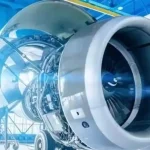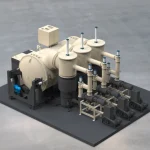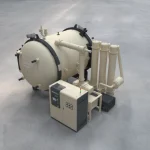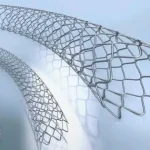What are the different types of heating elements used in vacuum furnaces?
1. Introduction
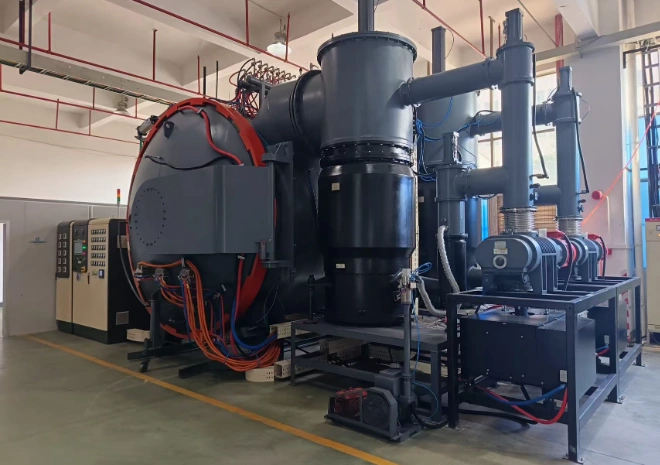
Vacuum furnaces rely on heating elements to achieve precise temperature control in inert or vacuum environments. The choice of heating element significantly impacts thermal efficiency, durability, and cost-effectiveness. This article explores the types, performance, and applications of heating elements used in vacuum furnaces, providing insights for industrial selection.
2. Classification of Heating Elements
2.1 Metal-Based Heating Elements
2.1.1 Nickel-Chromium Alloys
●Characteristics: High electrical resistance, stable oxidation resistance, and excellent mechanical strength at elevated temperatures.
●Applications: Widely used in industrial vacuum furnaces for temperatures up to 1,150°C. Common in heat treatment, brazing, and sintering processes.
2.1.2 Iron-Chromium-Aluminum Alloys
●Characteristics: Higher resistivity and lower cost than nickel-chromium alloys. Forms a protective aluminum oxide layer at high temperatures, enhancing lifespan.
●Applications: Suitable for vacuum furnaces operating below 1,300°C. Used in annealing, normalizing, and stress-relieving processes.
2.1.3 Refractory Metals (Molybdenum, Tungsten, Tantalum)
●Molybdenum:
Characteristics: High melting point (2,610°C), moderate cost, and susceptibility to oxidation in air.
Applications: Used in vacuum furnaces up to 1,600°C for heat treatment of tool steels and superalloys.
●Tungsten:
Characteristics: Highest melting point (3,422°C) and excellent thermal stability but brittle and expensive.
Applications: Ultra-high-temperature vacuum furnaces (>2,000°C) for sintering tungsten carbide and aerospace materials.
●Tantalum:
Characteristics: Resistant to corrosion and oxidation, with a melting point of 3,017°C.
Applications: Specialized vacuum furnaces for chemical processing and semiconductor manufacturing.
2.2 Non-Metal Heating Elements
2.2.1 Graphite
●Characteristics: High thermal conductivity, low coefficient of thermal expansion, and resistance to thermal shock. Emits carbon at high temperatures, which can react with certain materials.
●Applications: Vacuum furnaces up to 2,500°C for sintering, graphitization, and purification of metals.
2.2.2 Silicon Carbide
Characteristics: Semiconductor properties enable precise temperature control. High thermal conductivity and oxidation resistance.
Applications: Medium-to-high-temperature vacuum furnaces (up to 1,600°C) for semiconductor manufacturing and ceramic sintering.
3. Performance Comparison
3.1 Temperature Resistance
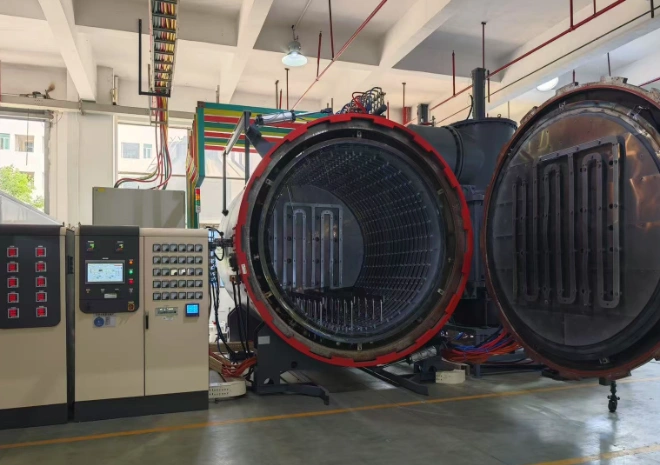
Metal Elements: Nickel-chromium (up to 1,150°C), iron-chromium-aluminum (up to 1,300°C), refractory metals (up to 3,000°C).
Non-Metal Elements: Graphite (up to 2,500°C), silicon carbide (up to 1,600°C).
3.2 Thermal Efficiency
Metal Elements: Nickel-chromium and iron-chromium-aluminum alloys exhibit stable resistance-temperature coefficients, ensuring consistent heating.
Non-Metal Elements: Graphite and silicon carbide offer rapid heating and cooling cycles due to high thermal conductivity.
3.3 Durability and Lifespan
Metal Elements: Prone to oxidation and embrittlement at high temperatures. Refractory metals require inert atmospheres to prevent degradation.
Non-Metal Elements: Graphite forms a protective carbon layer, while silicon carbide resists oxidation up to 1,600°C.
4. Application Scenarios
4.1 Low-to-Medium Temperature Vacuum Furnaces
Heating Elements: Nickel-chromium and iron-chromium-aluminum alloys.
Processes: Heat treatment, brazing, and annealing of steels and non-ferrous metals.
4.2 High-Temperature Vacuum Furnaces
Heating Elements: Molybdenum, tungsten, and graphite.
Processes: Sintering of tungsten carbide, heat treatment of superalloys, and graphitization of carbon materials.
4.3 Specialized Industrial Processes
Heating Elements: Tantalum and silicon carbide.
Processes: Semiconductor manufacturing, chemical vapor deposition, and purification of reactive metals.
5. Advantages and Disadvantages
5.1 Metal Heating Elements
Advantages:
Cost-effective for low-to-medium temperature applications.
Mechanically robust and easy to fabricate.
Disadvantages:
Limited temperature range.
Susceptible to oxidation and embrittlement.
5.2 Non-Metal Heating Elements
Advantages:
High-temperature capability (up to 3,000°C).
Rapid thermal cycling and chemical stability.
Disadvantages:
Graphite emits carbon, which may contaminate workpieces.
Silicon carbide is brittle and expensive.
6. Summary
The selection of heating elements in vacuum furnaces depends on temperature requirements, process compatibility, and cost. Metal-based elements (nickel-chromium, iron-chromium-aluminum, refractory metals) dominate low-to-medium and high-temperature applications, while non-metal elements (graphite, silicon carbide) excel in ultra-high-temperature and specialized processes. Understanding the trade-offs between thermal performance, durability, and cost is critical for optimizing vacuum furnace operations.
7. Frequently Asked Questions (FAQ)
Q: What are the primary differences between metal and non-metal heating elements in vacuum furnaces?
A: Metal elements (e.g., nickel-chromium, molybdenum) are cost-effective for low-to-medium temperatures but have limited lifespans at high temperatures. Non-metal elements (e.g., graphite, silicon carbide) offer superior high-temperature performance and thermal stability but are more expensive and may emit contaminants.
Q: In which industries are nickel-chromium alloys primarily used?
A: Nickel-chromium alloys are widely used in industrial heat treatment, brazing, and sintering processes for steels, non-ferrous metals, and ceramics.
Q: Why might manufacturers choose tungsten over molybdenum for vacuum furnaces?
A: Tungsten has a higher melting point (3,422°C vs. 2,610°C) and better thermal stability, making it suitable for ultra-high-temperature applications (>2,000°C). However, it is more brittle and expensive than molybdenum.
Q: How does the thermal efficiency of graphite compare to silicon carbide?
A: Graphite has higher thermal conductivity and rapid heating/cooling capabilities, while silicon carbide offers precise temperature control due to its semiconductor properties. Both are efficient but suited for different temperature ranges.
Q: Are refractory metals commonly used in industry?
A: Yes, refractory metals (molybdenum, tungsten, tantalum) are critical for high-temperature vacuum furnaces in aerospace, semiconductor, and tool steel manufacturing.
Q: What are the advantages of using iron-chromium-aluminum alloys?
A: Iron-chromium-aluminum alloys are cost-effective, have high resistivity, and form a protective oxide layer at high temperatures, extending their lifespan in vacuum furnaces.
Q: Can graphite be used in the same applications as nickel-chromium alloys?
A: No, graphite is unsuitable for low-temperature applications (<1,000°C) due to its high thermal conductivity and potential carbon emission. Nickel-chromium alloys are preferred for temperatures up to 1,150°C.
Q: What are the potential drawbacks of using tungsten in vacuum furnaces?
A: Tungsten is brittle, difficult to machine, and expensive. It also requires inert atmospheres to prevent oxidation at high temperatures.
Q: How does the cost of silicon carbide compare to nickel-chromium alloys?
A: Silicon carbide is significantly more expensive than nickel-chromium alloys due to its specialized manufacturing process and superior high-temperature properties.
